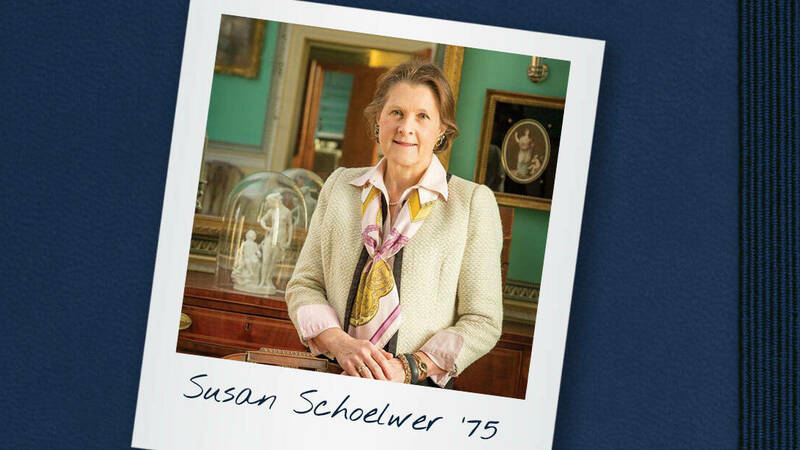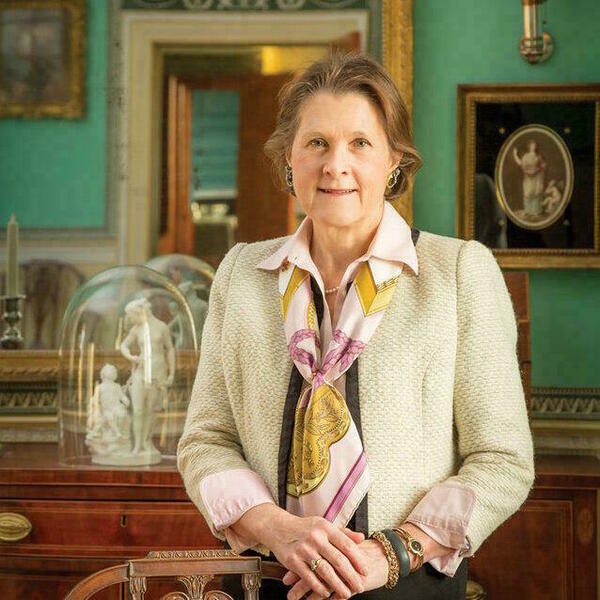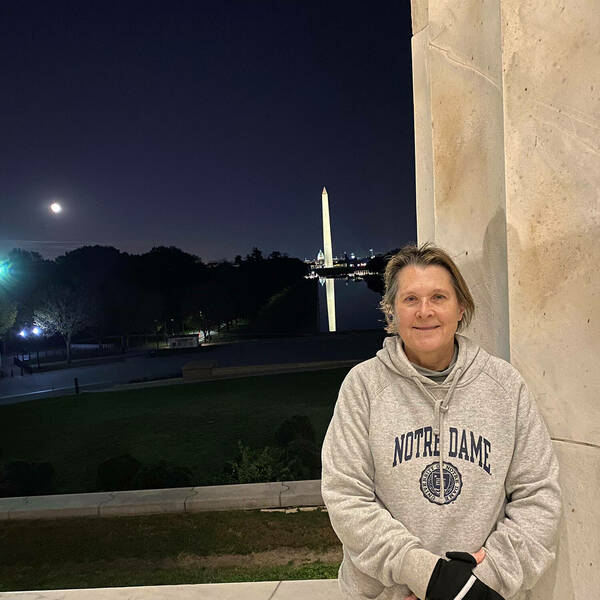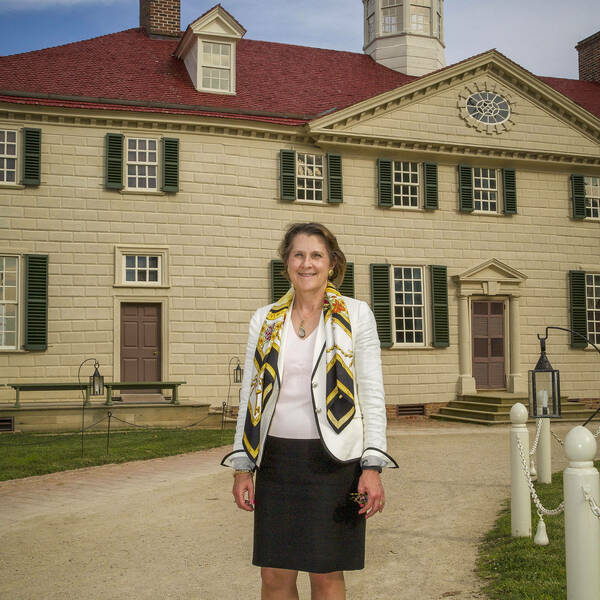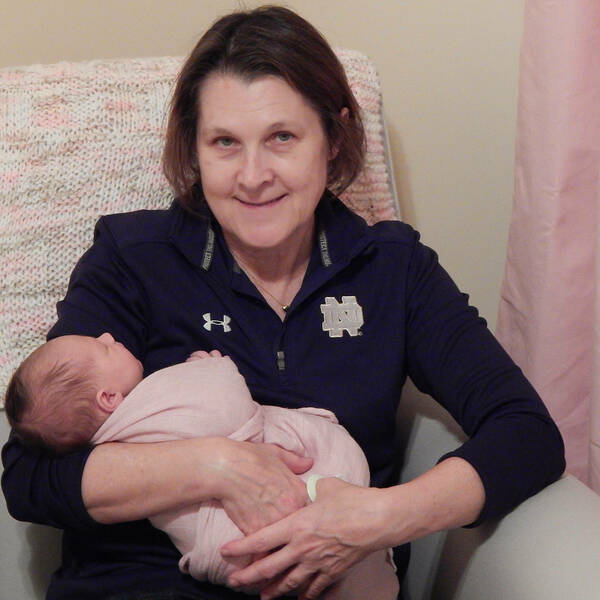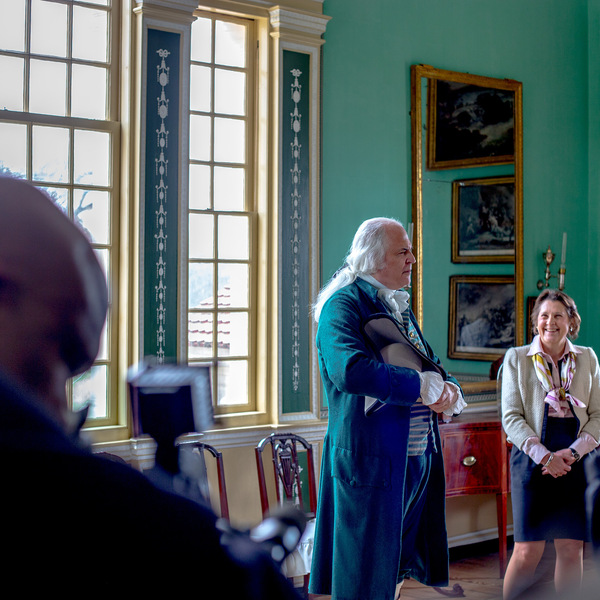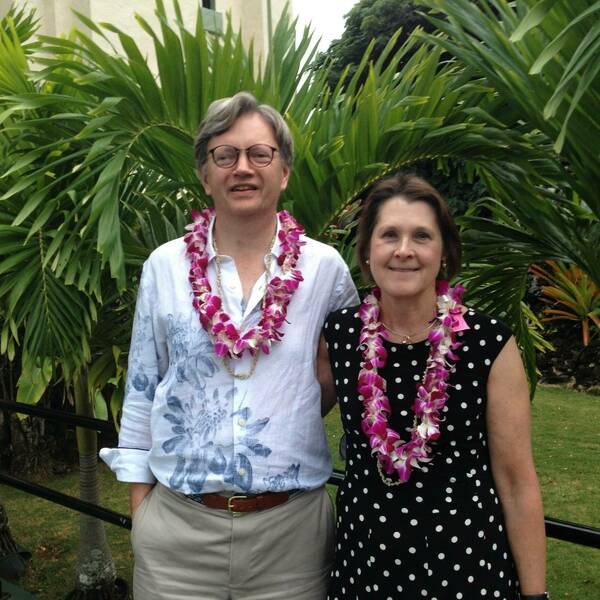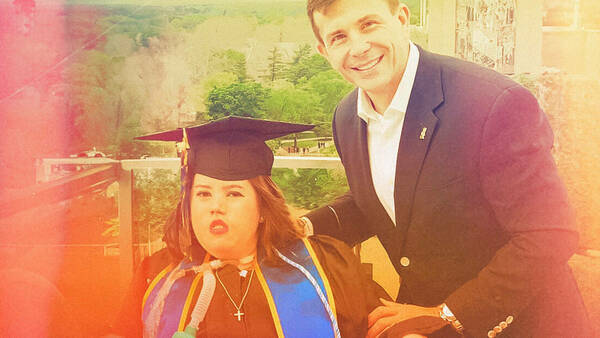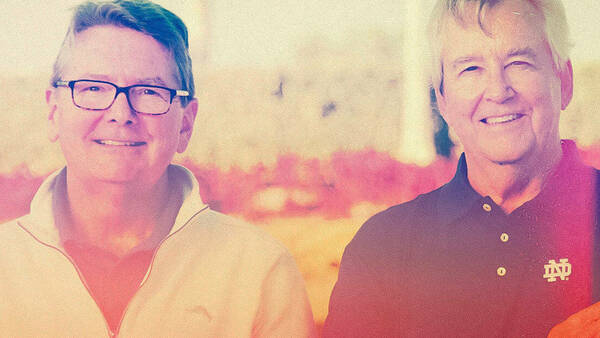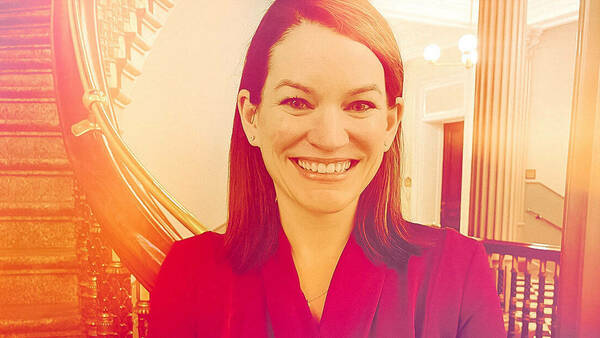Name: Susan Prendergast Schoelwer
Class Year: 1975
Residence Hall: LeMans (St. Mary’s College), Walsh, Badin, Lyons
Major: History
Student Activities: The Observer, horseback riding classes
Occupation: Executive Director, Historic Preservation and Collections and Robert H. Smith Senior Curator at Mount Vernon
Local Notre Dame club: Notre Dame Club of Washington, D.C.
What do you like most about your current role?
I currently perform a senior leadership role at the nation’s preeminent historic house — the home of America’s first president — visited by more than one million in-person guests and millions more online each year. I am a historian who oversees the “objects” that Mount Vernon preserves and shares with the public: historic buildings, art, artifacts, gardens, landscapes, and even heritage breed livestock. I supervise a wide range of highly trained and passionate professionals — curators, architectural historians, conservators, carpenters, archaeologists, and horticulturalists.
I like almost everything I do. On any given day, my tasks might include examining George Washington’s sword, climbing a scaffold to look at preservation woodworking and even giving a tour of our exhibition on the enslaved people of Mount Vernon. My job is intellectually challenging and affords me opportunities to contribute to a better understanding of America.
For me, history is not a static set of facts and dates but a critical life skill — a dynamic and ever-fascinating process of fitting pieces together to arrive at a better understanding of how things happened, how people related to each other, how the present came to be, and how things could have been different.
What lessons from Notre Dame do you still use in your day-to-day work life?
The most important intellectual legacy of my time at Notre Dame has been a broad liberal arts education – which has provided me with tools to use in almost every situation: researching, thinking critically, and writing clearly. A liberal arts degree ensures a strong and adaptable foundation for not only long-term career success but a well-grounded life.
A second key element of my Notre Dame education was participation in the university’s first years of co-education. They were not easy, and the adjustment was strained by professors who had never taught women and students whose single-sex educations had left them ill-equipped to interact with each other either academically or socially. But, for me, those years were intellectually invigorating. When I learned a few weeks before graduation that I ranked second in the College of Arts and Letters, I came to a new understanding of my intellectual gifts and greater confidence in my capacity.
I matriculated at St. Mary’s College but was fortunate to be assigned my freshman year to three co-exchange classes at Notre Dame. The most seminal of these was an honors world history course with Matthew A. Fitzsimons, who introduced me to cultural history — a rich and enthralling tapestry that encompassed the material world of architecture, art, and artifacts. Once I transferred, Carol Moore introduced me to women’s history, which remains a key focus of my scholarship. Marshall Smelser’s senior history seminar drilled me in the use of primary sources (not to mention a focus on Alexander Hamilton, which helped me welcome the Broadway musical’s cast and crew on a deep background trip to Mount Vernon). Dean Porter and Thomas Schlereth initiated me in the methodologies of art history and interdisciplinary material culture studies. These classes echo in my current work, including my proudest accomplishment — the initiation and leadership of a ground-breaking exhibition, Lives Bound Together: Slavery at George Washington’s Mount Vernon.
What meaningful connections did you make on campus, whether with roommates, friends, professors, or someone else?
The most significant of my ND connections is certainly my spouse and fellow history major William F. Schoelwer ’75. We met late in our sophomore year, got engaged at the Grotto five years later, and celebrated our wedding at the Basilica of the Sacred Heart. Our shared ND heritage has been an important and nurturing thread in our lives, as we have negotiated two careers, raised three children, and navigated several interstate and one international relocations. ND connections have helped ease the orientation to new communities and in making new friends, of whom I am particularly grateful to count the late Anthony P. Bergin ’75 of Waterbury, Connecticut, an inspiring example of indomitable good cheer, optimism, faith, and generosity.
Our families are interlaced with ND alums — two siblings, a son, daughter-in-law, and son-in-law-to-be. Bill and I have returned to campus for football weekends, reunions, graduations, and the wedding of our son and daughter-in-law. I was also privileged to lecture to a history class. We both keep in touch with ND friends, now spread from Hawaii to East Africa, and I enjoy “mini reunions” with a close group of ND women. This past year, our lives were enriched anew by regular participation, via Catholic TV, in Sunday Mass at Sacred Heart.

